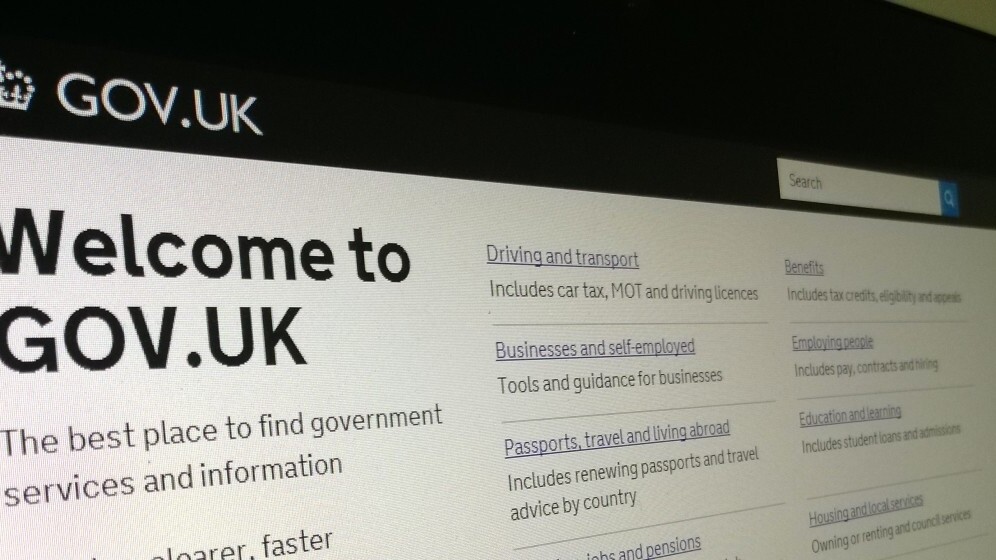
The UK government’s attempts to revolutionize the way it delivers services, carries out transactions and interacts with the public by adopting a ‘Digital By Default’ approach is a massive departure from well-entrenched disparate, sometimes still paper-based systems that could potentially see savings of up to £1.8bn per year, essentially by streamlining processes.
More importantly, it could see the way people get information, or carry out essential tasks like electoral registration, managing student loans or even renewing patent applications, get a whole lot simpler and ultimately it will lead to the public steering policy changes simply by using the new digital services.
Today marks 115 days since the government’s pledge to overhaul 25 ‘exemplar’ services to reach Digital By Default standard by April 2014, and for all of those to be completed by March 2015. 25 might sound like a lot, but these are just the most frequently used, or systems that were already on their way to becoming digitized already, such as student finance – in total there are more than 660 services that see more than 1.3 billion transactions per year. Currently, more than half of those don’t have a digital option.

Milestones
At a government ‘Sprint Alpha 25’ event to mark the milestone, Francis Maude, Minister for the Cabinet Office, said that simplification and digitization of these services would save billions of pounds once established and that the payback for going digital in terms of cost savings was less than one month in some cases.
“The payback can be ridiculously small. So small we don’t have systems capable of accommodating it. The payback can be as little as one month; one month’s savings pays for the cost of the service. That’s a spectacular return, it doesn’t even count as investment – that’s a kind of modest running cost with a huge, huge return. The opportunity to do things so much better is immense.”
The government says that in carrying out transactions as it does now and has done, it works out 20 times more expensive to transact by phone, 30 times by post, and 50 times as expensive to provide the services face-to-face versus over the Internet.
Today also marks the day that the public at large can keep tabs on exactly how well the projects are coming along via the Digital Transformation dashboard. The process of going digital has been broken down into four stages: Discovery (finding out what users need, what to measure and what the constraints are), Alpha, Beta (private initially, and then public) and Live. Where regular TNW readers might usually associate Live as being the switching on of the service, in this case it actually means the switching off of the previous service, as the new digital service will have already been running in beta form for some time.
So far, of the 25 services 11 are now in Discovery stage, four are in Alpha, nine are in Beta and just one is Live.
Your chance to influence policy
One of the most interesting aspects of the scheme, however, is the way in which policy could ultimately end up being shaped by the way in which people interact with it – many of the existing systems have convoluted process and policy that isn’t viable in a streamlined digital alternative. This is where we’re headed next, Mike Bracken, Executive Director of Government Digital Services (GDS) told The Next Web:
“The separation of policy from technical delivery is one of the things that has killed us over the last 15 years […] getting policy people in the room next to developers and having that rich debate is something that’s happening now.
“What GDS has brought along with those developers and people having a policy debate is a rich set of data on usage. So you can see how many people are live on a platform at the moment, you can see the conversion tools behind some of our transactions, you can see when people aren’t getting the right service.”
What this means is that it’s not just the opinion of a policy maker, designer or prooduct specialist, instead, it’s based on the real users of the service.
“Bringing those usage figures to a policy debate is a radical change, a radical change.”
Perhaps even more importantly than the technological transformation that’s already underway is the change needed in the way in which people interact with the services, and by extension, the government. It wants its relationship with you to be far more like one with your bank, or phone provider than that provided by the legacy systems currently in place.
One obstacle to the Digital By Default strategy is that it obviously requires everyone to know that the digital services exist and be able to use them, whether that’s hindered by age, technical access or anything else.

Don’t get complacent
Martha Lane Fox, co-founder of Lastminute.com and the author of the report that ultimately lead to the digital strategy, remains adamant that the education programme will be enough to ensure no one is left behind.
“No one has ever said that someone will not be able to access a service, that’s fundamental, that’s why I’m doing this… I chair GO ON UK, it’s a coalition of the private sector and we’ve done a massive amount of work region by region in the country with a huge programme in Liverpool, we’re going to the North-East at the end of the year and we’re going to do a blanket programme around the country next year.”
While Martha Lane Fox is clearly a champion of the strategy, she cautions that the task ahead shouldn’t be underestimated and that continually achieving progress – wherever it can be made – is what’s most important right now.
“The vision is pretty clear for a huge amount of work that has to happen now… Don’t underestimate the complexity in moving those top 25 transactions to become proper digital services and remain proper digital services, and remain at the cutting edge of how you iterate and all of those things, to ensure they remain accessible on the right devices as the technology moves.
Of course, it’s important to have a clear view of what Digital By Default might look like in another five years, let’s say, I also think in my experience, it’s about focusing on the bits that can be done and chunked up and achieved right now.”
Get the TNW newsletter
Get the most important tech news in your inbox each week.




